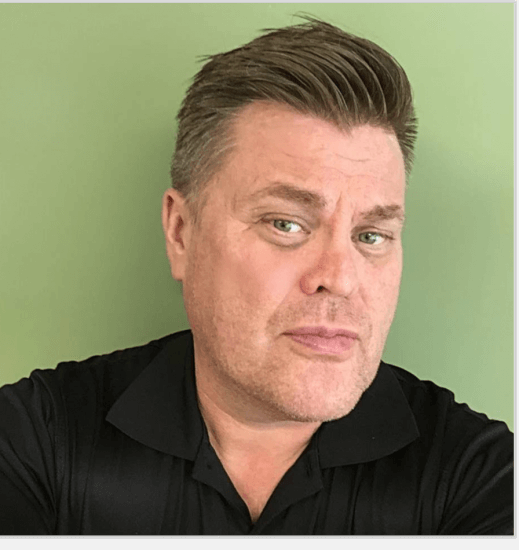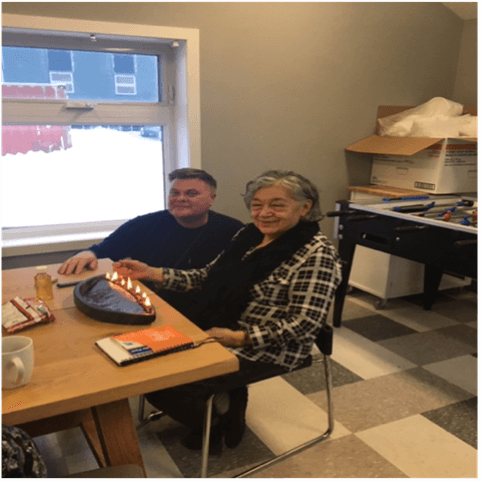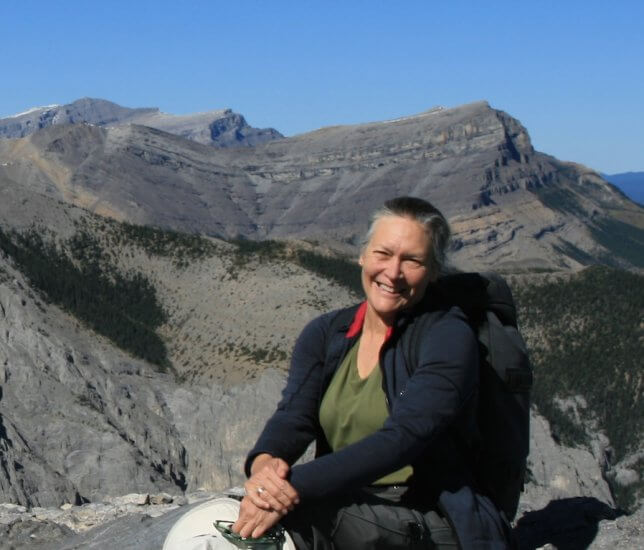AU grad’s research uplifts Inuit cultural safety
As one of the first Inuit in Canada to earn a doctoral degree, Dr. Wayne Clark wanted to use his Doctor of Education in Distance Education (EdD) to help Inuit and other Indigenous communities.

That’s why the Athabasca University graduate focused his dissertation on incorporating Inuit culture, history, and storytelling into an Inuit health curriculum for non-Inuit physicians. It’s also why he will begin a new role Feb. 1 as the Executive Director of Indigenous Health Initiatives for the University of Alberta’s Faculty of Medicine and Dentistry.
“For us in the Inuit community, we can see this as something to be celebrated,” he said. “It’s certainly been something not only I’m proud of, but all my community members have all given me accolades.”
His EdD supervisor, Dr. Debra Hoven, said Clark’s commitment to the Inuit community was always evident, as he consistently consulted with traditional knowledge–keepers to ensure his work was appropriate for his community.
“We went above and beyond in ensuring throughout his process that his research would pay back and forward to his community, that it was what his community wanted and needed,” she said. “They were involved right from the beginning in formulating his questions and approach.”
Educational background
Clark’s educational and professional background go back to Churchill, Man., where his mother was living when she met his father, and to her family’s traditional home of Tikirqjuag, Nunavut.
He earned a bachelor of business administration degree from the University of Winnipeg, and a master of arts in communications from Royal Roads University.
His professional career has included program management roles in Indigenous health and research, communication, and culture. He also has extensive volunteer experience with organizations focusing on the health of Inuit and Indigenous communities.
Clark said his interdisciplinary background was one factor that drew him to AU when he was looking for a doctoral program where he could focus his research on healthcare.
“What makes me really happy about coming to AU, that would have been different if I’d gone elsewhere, is I really had a lot of control over how I wanted to shape my experience and my degree program,” he said.
Inspiration

At the centre of Clark’s EdD work is the Inuit idea of Inuit cultural safety—cultural safety being a practice that recognizes, respects, and nurtures the unique cultural identity of a patient—and more specifically the idea that Inuit Qaujimajatuqangit (IQ), or traditional knowledge, is the foundation for Inuit cultural safety.
“It’s basically principles for living that have been passed down by elders,” he said. “They work together, like natural laws, and can be applied to many different things and life situations. IQ has been credited for long Inuit survival in the North.”
He said a lot of cultural safety training being offered in Canada focuses on Indigenous issues more broadly. As Inuit are a separate and unique Indigenous group, with their own history, culture, and language, he saw the need for some kind of distinct education.
“That’s the idea that there would be something more specific for Inuit, because the Indigenous cultural training that often is offered in this country is mostly focused on First Nations,” he said. “It doesn’t have a large Inuit component to it.”
While attending the 2018 World Conference on Circumpolar Health in Copenhagen, Denmark, Clark said he spoke with a well–known Inuk Elder Levinia Brown. As part of her keynote address, she said Nunavut needed more diabetes education and training to help control Type 2 diabetes, which was becoming more prevalent in the Inuit community.
He decided to focus his doctoral work on diabetes, but in the course of his research, he wanted to work with the community on the idea of cultural safety.
“I realized shortly into the process it was going to be a lot more about culture than diabetes education, specifically,” he said.
Doctoral work

Clark’s research study used storytelling to inform the development of an online module for the provision of Inuit cultural teaching, using Type 2 diabetes as an exemplar.
He envisioned an online offering that would include digital storytelling, and he consulted extensively with his Inuit community about what would be important to include in the module. The result is a document that highlights what the process for engagement with his Inuit community should look like.
“If somebody was doing Inuit–specific research following an Inuit research methodology, there would be specific protocols in place, and an understanding around the cultural protocols, and ensuring that research engagement was done respectfully and in a manner in keeping with an Inuit way of life,” he said.
Hoven said the final product is a valuable prototype for an Inuit/IQ-informed online module to educate non-Inuit physicians. Even the process for reviewing and defending the dissertation involved consultation with and feedback from the Inuit community.
“At both his candidacy defence and his final defence, I was able to find Inuk external examiners,” she said. “Both were very impressed with his research approach, his methods, his knowledge of and commitment to Indigenous principles, and the design of the module that he produced the prototype for.”
In his new role at the U of A, and also at the University of Manitoba where he’s a visiting scholar, Clark said he hopes to find opportunities to implement the module so it can be offered to non-Inuit physicians as part of a cultural safety program.
He added he hopes the implementation will be community–led, and that this work helps inspire other Inuit to take an interest in health science, Inuit health research, and Inuit research methodologies.
“One of the things that came out of this that I was really happy about is we saw a pattern with how I worked with the community and we built an engagement process that I think could be used for other participatory research in the future,” he said.